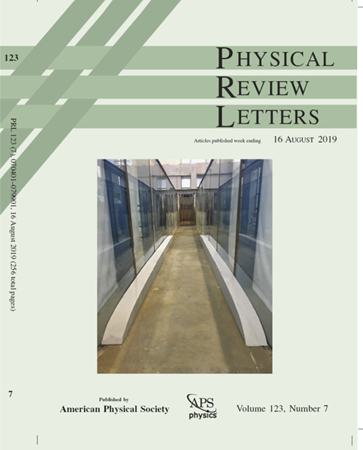超新星中的自相互作用暗部可以表现为相对论流体
IF 8.1
1区 物理与天体物理
Q1 PHYSICS, MULTIDISCIPLINARY
引用次数: 0
摘要
我们重新审视了超新星(SN)对一个由毫冲粒子χ和无质量暗光子组成的隐藏扇区的约束。除非自耦合被微调到很小,否则粒子不会以气体形式离开超新星内核,而是形成相对论流体和随后的暗QED火球,顶着与物质相互作用产生的阻力流出。由于低能超新星地幔中的过度能量沉积,可以得到新的边界。SN 1987A 的冷却边界在自由流机制中意外地没有受到影响。χχ¯→标准模型的加入大大改变了捕获机制中的约束条件,而捕获机制只能用流体力学方法处理。我们的结果可以适用于一般的亚GeV自相互作用暗部门。 美国物理学会发表 2024本文章由计算机程序翻译,如有差异,请以英文原文为准。
Self-Interacting Dark Sectors in Supernovae Can Behave as a Relativistic Fluid
We revisit supernova (SN) bounds on a hidden sector consisting of millicharged particles χ and a massless dark photon. Unless the self-coupling is fine-tuned to be small, rather than exiting the SN core as a gas, the particles form a relativistic fluid and subsequent dark QED fireball, streaming out against the drag due to the interaction with matter. Novel bounds due to excessive energy deposition in the mantle of low-energy supernovae can be obtained. The cooling bounds from SN 1987A are unexpectedly not affected in the free-streaming regime. The inclusion of χ χ ¯ → standard Published by the American Physical Society 2024
求助全文
通过发布文献求助,成功后即可免费获取论文全文。
去求助
来源期刊

Physical review letters
物理-物理:综合
CiteScore
16.50
自引率
7.00%
发文量
2673
审稿时长
2.2 months
期刊介绍:
Physical review letters(PRL)covers the full range of applied, fundamental, and interdisciplinary physics research topics:
General physics, including statistical and quantum mechanics and quantum information
Gravitation, astrophysics, and cosmology
Elementary particles and fields
Nuclear physics
Atomic, molecular, and optical physics
Nonlinear dynamics, fluid dynamics, and classical optics
Plasma and beam physics
Condensed matter and materials physics
Polymers, soft matter, biological, climate and interdisciplinary physics, including networks
 求助内容:
求助内容: 应助结果提醒方式:
应助结果提醒方式:


